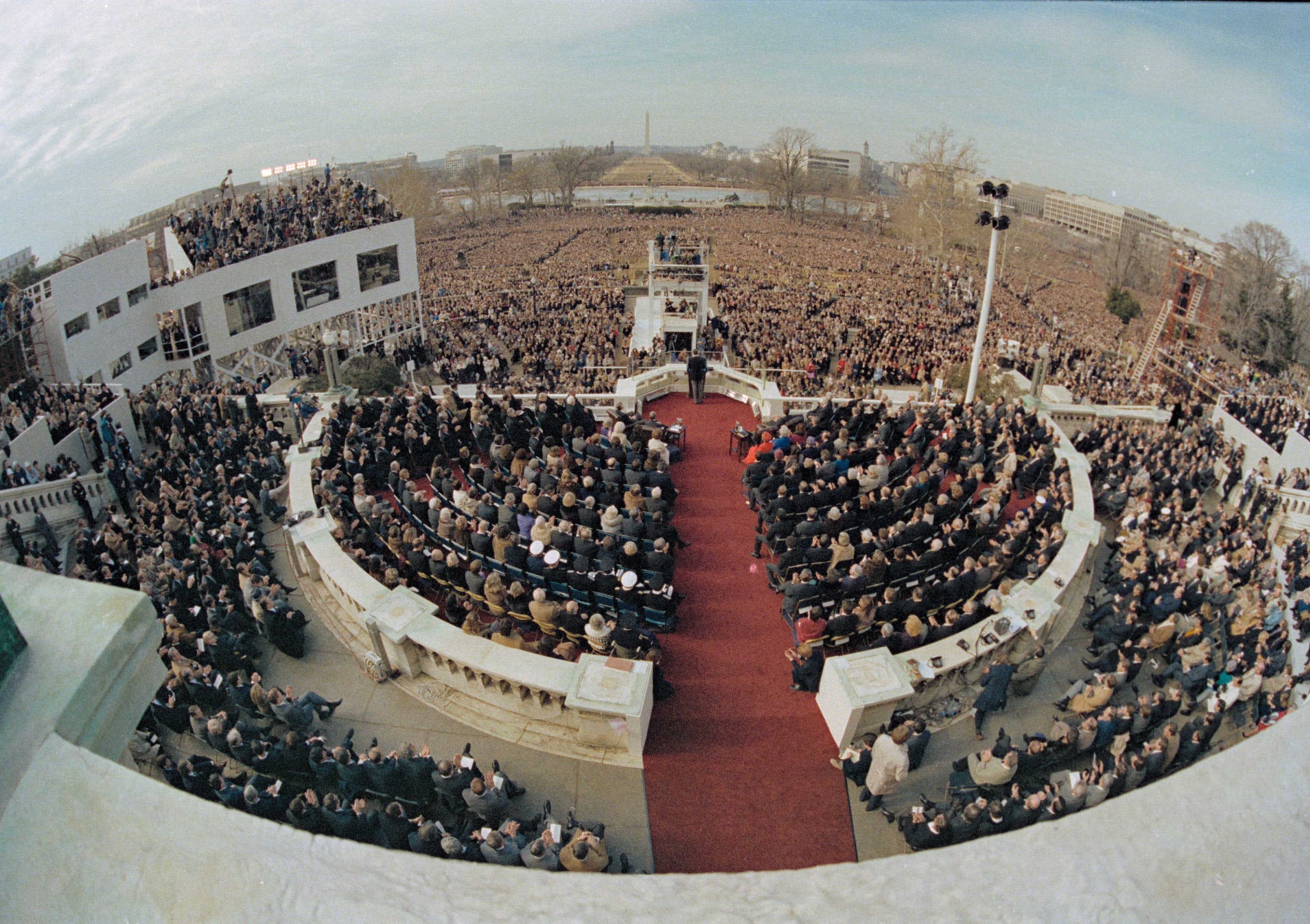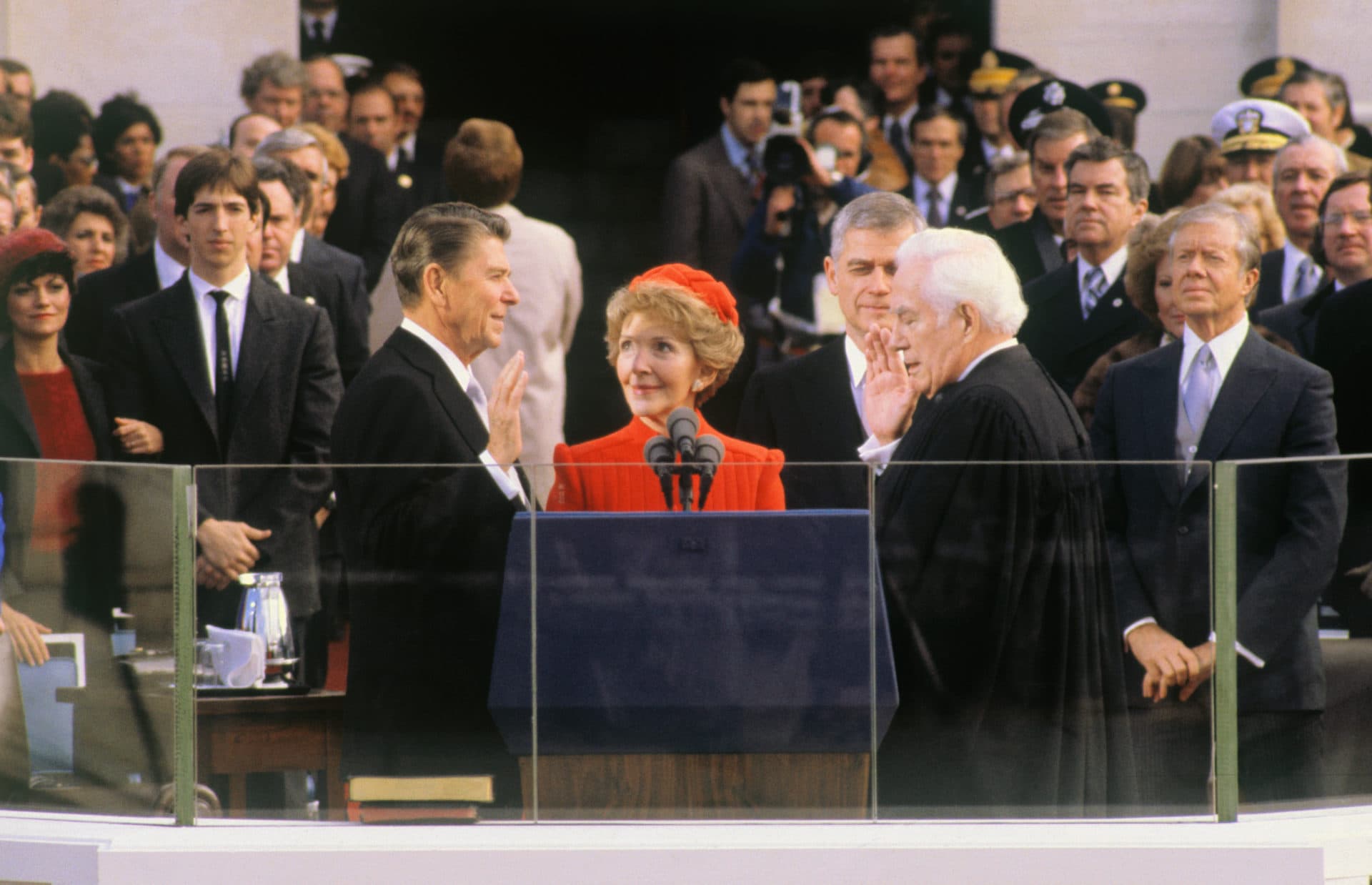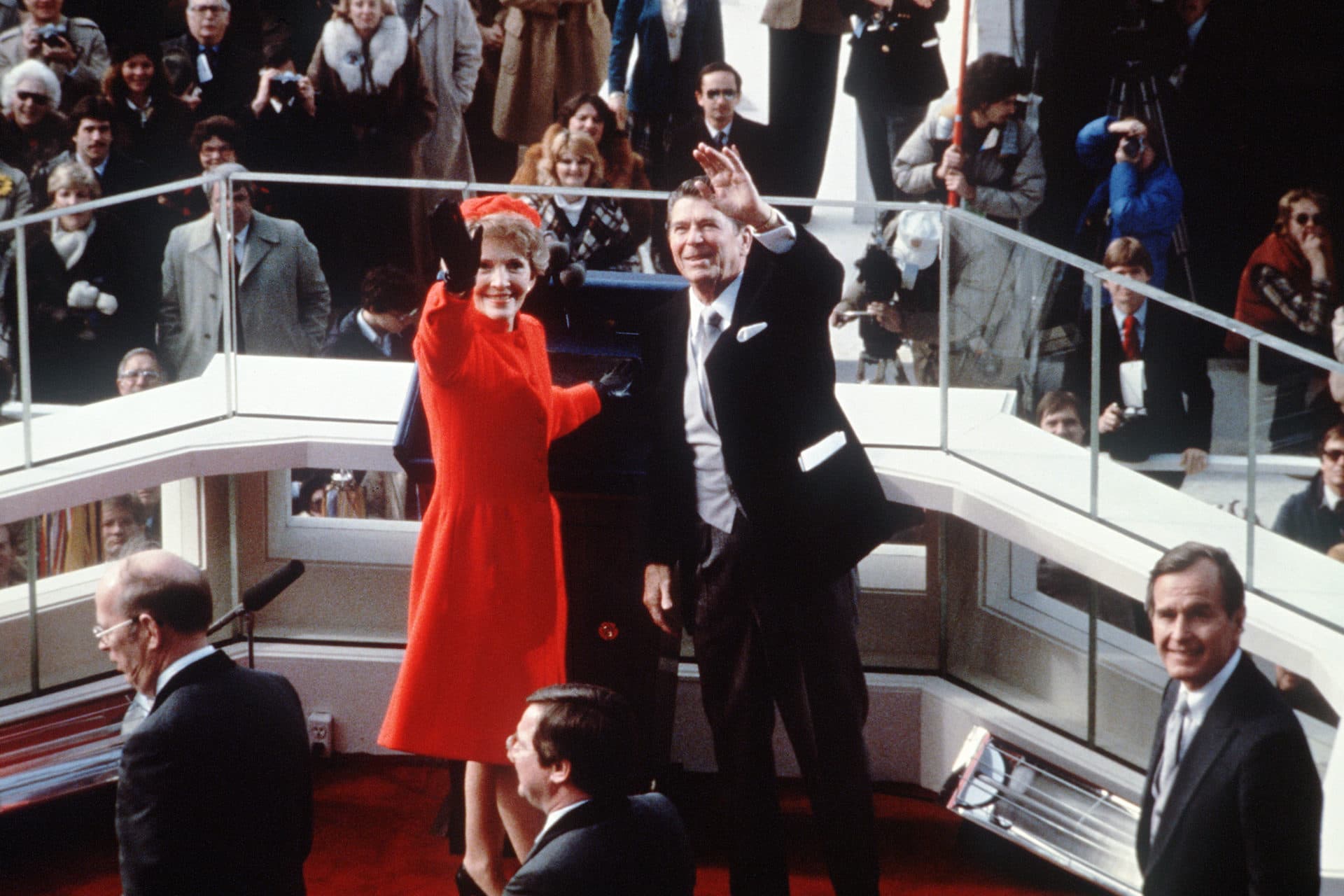Advertisement
Reporter's Notebook
'Incredibly Close To The Action': A Rookie Reporter's Inauguration Access, 40 Years Ago

Security is tight in Washington, D.C. Two weeks after insurrectionists loyal to President Trump stormed the U.S. Capitol, federal officials aren’t taking any chances for the inauguration of President-elect Biden and Vice President-elect Harris.
As images circulate of extensive barricades and armed National Guard troops around Washington this week, I'm reflecting on a very different scene from 40 years ago when, as a rookie radio reporter, I went to the city to cover the first presidential inauguration of Ronald Reagan.
As an Emerson College sophomore in January of 1981, I was working as a freelancer, providing State House reports for a half-dozen radio stations around Massachusetts. With then-Gov. Ed King and key figures from the state Legislature also heading to Washington for the inaugural festivities, I felt it was necessary for me to be there.
I hit up each of my stations for an extra $10 to help fund a round-trip ticket on Amtrak’s "Night Owl," which ran overnights between Boston's South Station and Union Station, just a couple blocks from the U.S. Capitol. My godmother lived in Alexandria, Virginia, at the time, and I was invited to stay on their pull-out couch in the basement. With travel and accommodations set, I was ready to cover the big story.
In 1981, there were questions as to whether outgoing President Jimmy Carter would attend Reagan's inauguration. In the days before the ceremonies, it appeared the 444-day-long hostage siege at the U.S. Embassy in Tehran was winding down. The crisis dogged Carter in his final year in office, and many historians contend it may have cost him a second term.
On his last full day as president, the West Wing was abuzz with chatter about whether Carter would miss Reagan's swearing in to fly to what was then West Germany to welcome the hostages to freedom.
I found myself in the middle of the press frenzy at the White House that day.
In the early morning of Jan. 19, I made my way over to 1600 Pennsylvania Avenue. I had a "Campaign 1980" press pass that had been issued by the Secret Service, and it was still being honored at the White House. After flashing the pass at the security booth at the Northwest entrance of the White House grounds, I walked up the driveway to the pressroom. I was astonished at how once I passed the security check, it seemed to be assumed that everyone on the grounds was supposed to be there. No one questioned my presence, or where I went (although, I’m sure if I strayed too far from the pressroom, I would have been stopped).
After a press briefing by then-presidential spokesman Jody Powell, I remember all the talk among national reporters about Carter's plans. Reporters expected the president was about to make some remarks from a podium set up near the South Portico. I slipped out the back door of the pressroom to the covered walkway that connects the West Wing with the "Executive Mansion." I can’t remember if I made this journey on my own, or more likely, I followed other reporters. But, I do remember cutting through the bushes to make my way to a press pen at the rear door of the White House.
I waited for a while before word filtered out to us that there would be a delay in the release of the hostages, so Carter would not be flying out. I found my way to a bank of pay phones located in the lower level of the pressroom to file reports to my stations.

The next day, as Reagan was being sworn in as the 40th president of the United States, Iran set free the 52 American hostages held for more than a year. The rest of the day was spent covering the parade down Pennsylvania Avenue to the White House.
My trip to Washington wrapped up on Jan. 21, but I still had things to cover. I returned to the White House to witness the first full day of the Reagan administration.
I attended James Brady’s first briefing as White House press secretary. Afterwards, I was standing next to Brady as someone explained to him the signaling system used in the pressroom at the time to communicate to reporters when news would be made, and when a “lid” — meaning there would be no more news that day — had been called.
After the briefing, I attended a senate session where Alexander Haig was confirmed as U.S. secretary of state, and finally a reception in the East Room of the White House where President Reagan feted some of his high-profile supporters (including Elizabeth Taylor, her then-husband Sen. John Warner, the Rev. Billy Graham and the Osmond Family, just to name a few). It was then time to head over to Union Station to catch the train back to Boston.
On this 40th anniversary of Reagan’s inauguration, I’m struck by how much more accessible locations and events were at that time.
There was, of course, security. But, it amazes me that I could easily move from one location to another, and get incredibly close to the action. Up until that point for me, the federal government was something I had only read about in my high school history books.
To be there, watching the newly elected president from a mere few hundred feet away, it all seemed so much closer to me.
There’s no question, following the contentious 2020 election and aftermath culminating with the siege of the U.S. Capitol this year that the security restrictions now in place are absolutely necessary. But I’m saddened the heightened measures will likely impede the ambitious rookie reporters from seeing things from the perspective I got so many years ago.

